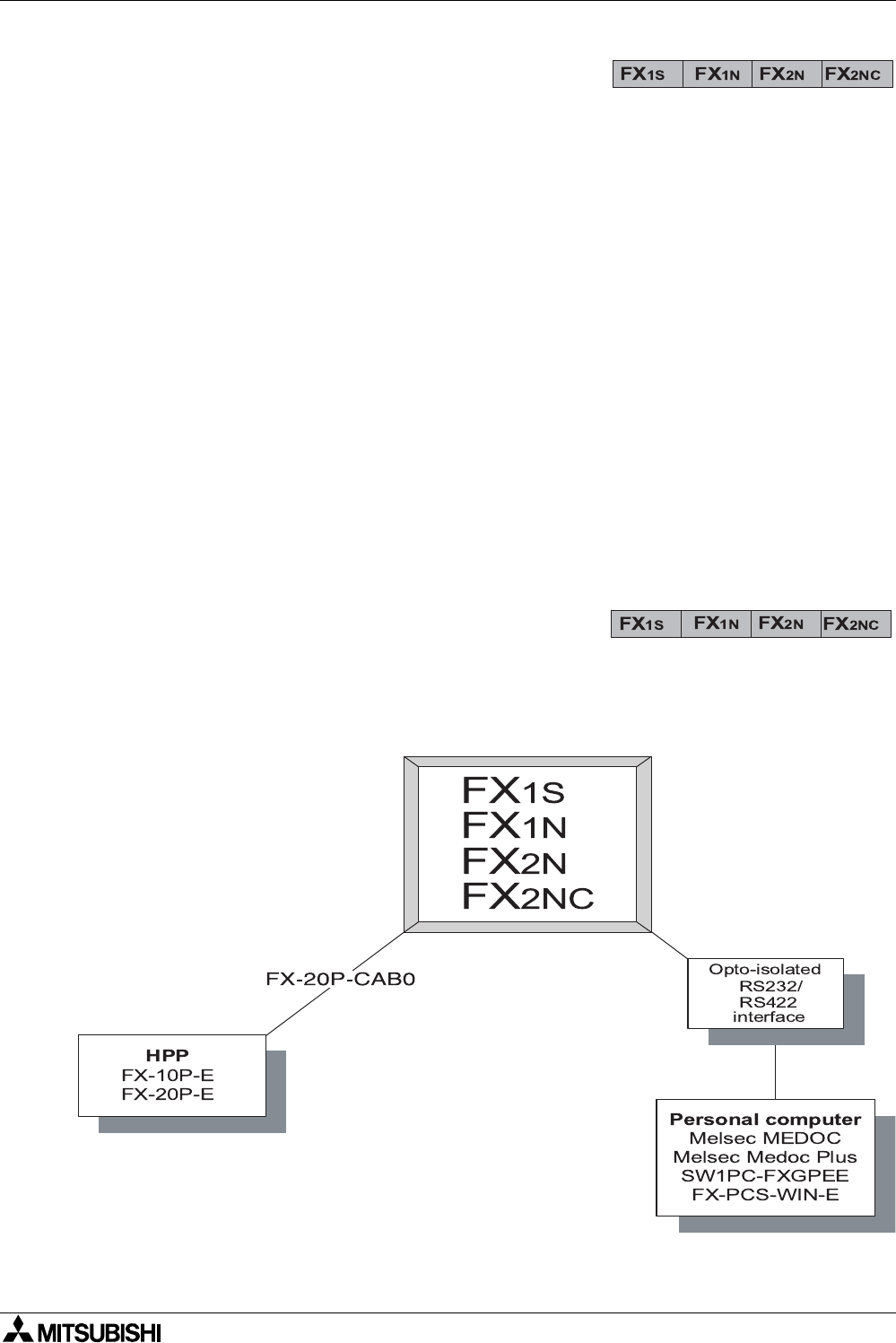
Introduction 1
1-2
1.2 What is a Programmable Controller?
A Programmable Logic Controller (PLC or programmable controller) is a device that a user can
program to perform a series or sequence of events. These events are triggered by stimuli
(usually called inputs) received at the PLC or through delayed actions such as time delays or
counted occur-rences. Once an event triggers, it actuates in the outside world by switching ON
or OFF electronic control gear or the physical actuation of devices. A programmable controller
will continually ‘loop’ through its internal ‘user defined’ program waiting for inputs and giving
outputs at the programmed specific times.
Note on terminology:
The term programmable controller is a generic word used to bring all the elements making the
control system under one descriptive name. Sometimes engineers use the term
‘Programmable Logic Controller’, ‘PLC’ or ‘programmable controller’ to describe the same
control system.
The construction of a programmable controller can be broken down into component parts. The
element where the program is loaded, stored and processed is often known as the Main
Processing Unit or MPU. Other terms commonly heard to describe this device are ‘base unit’,
‘controller’ and ‘CPU’. The term CPU is a little misleading as todays more advanced products
may contain local CPU devices. A Main CPU (or more correctly a Main Processing Unit)
controls these local CPUs through a communication network or bus.
1.3 What do You Need to Program a PLC?
A variety of tools are available to program the Mitsubishi FX family of PLCs. Each of these
tools can use and access the instructions and devices listed in this manual for the identified
PLC.


















